Despite marketing professionals trying to come up with new, creative ways to promote goods and boost sales, internet users distrust paid advertising more than ever before. Last year’s statistics provided by eMarketer show that the number of ad-blocking users in the US increases with time, and will continue to increase.
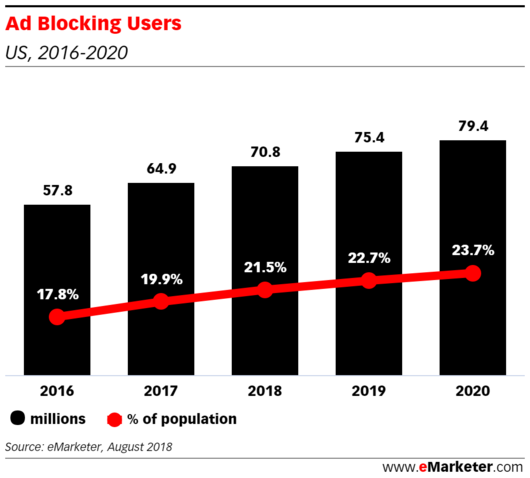
The situation in European countries is more or less the same, as can be seen in the images below.
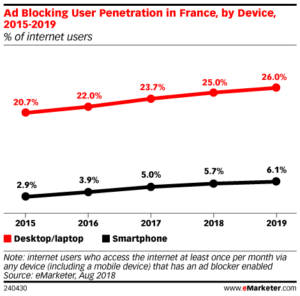 |
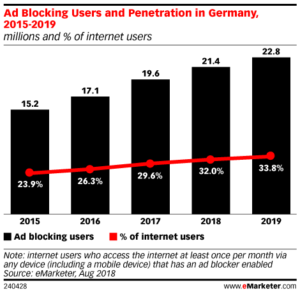 |
The reason for ad-blocking is simple: people have become tired of ads and find them intrusive.
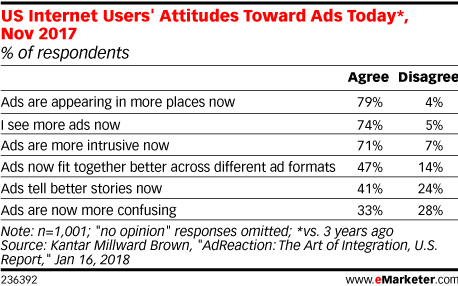
Nowadays, web users desire a more personal and authentic advertising experience, which explains the popularity of native advertising.
WHAT IS NATIVE ADVERTISING EXACTLY?
According to Wikipedia, “native advertising is a type of advertising, mostly online, that matches the form and function of the platform upon which it appears”. By “form” we mean that native ads match the visual design of a specific platform. By “function” we mean that they look like natural content.
Putting it simply, native advertising doesn’t really look like advertising. Instead, it looks like another piece of content created for a platform. As such, these ads are far less intrusive and don’t stick out in a negative way.
WHAT CAN BE CONSIDERED NATIVE ADVERTISING?
If native advertising doesn’t really look like advertising, how do we distinguish it from other content?
According to the IAB Native Advertising Task Force, there are six types of native advertising:
- In-feed ads
- Paid search ads
- Promoted listings
- Recommended content
- IAB standard ads with “native” element / in-ads
- Custom / other
In this article, we will focus on the first five.
1: IN-FEED ADS
Such ads appear amongst other content in a newsfeed or content list. They usually come in one of two forms:
- The first version is created by a publisher’s editorial team in collaboration with a brand. It matches the platform’s function and content and looks like this, for example:
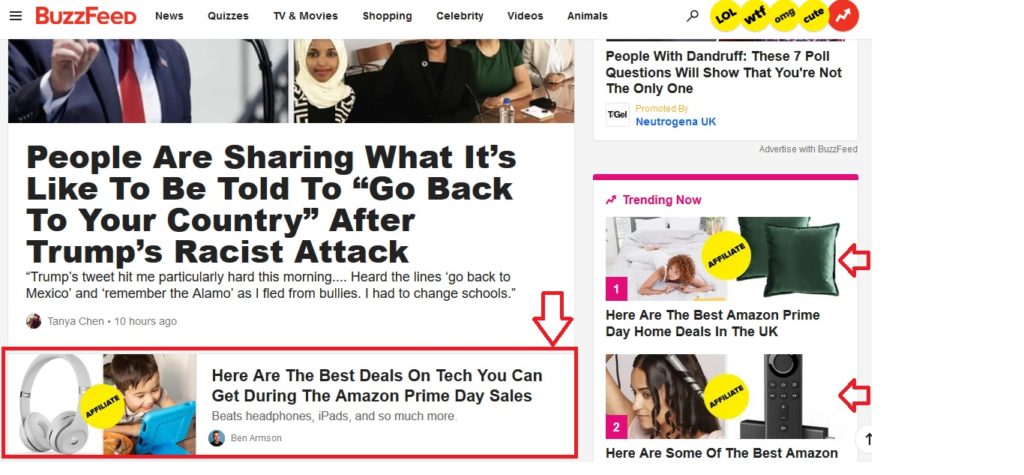
- The second version of an in-feed ad takes users off the publisher’s site to content that is being promoted. It looks like this:
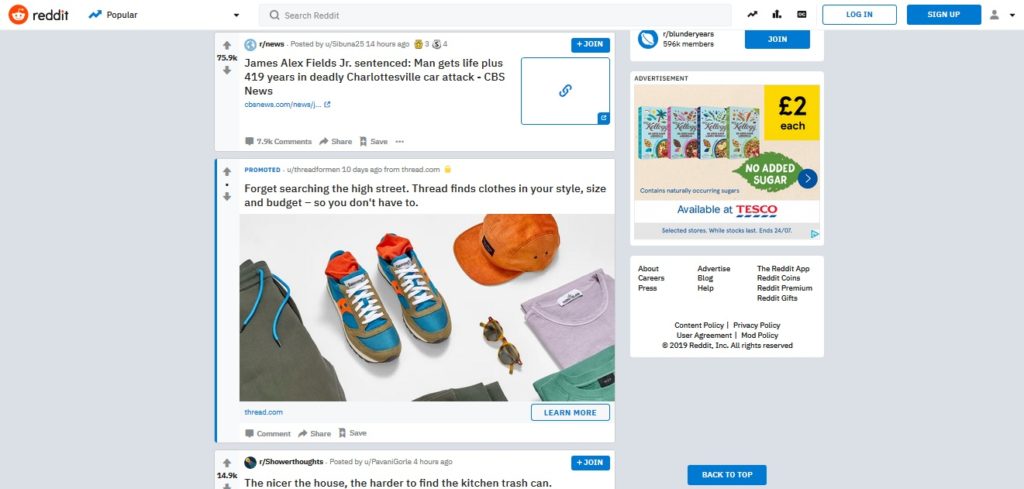
2: PAID SEARCH ADS
If you start looking for something on Google or other search engines, you’ll see paid search ads popping up first in the results. Notice how their layout mimics organic search results: this way, such ads look less intrusive. A person might confuse one with a natural search result if they don’t pay much attention.
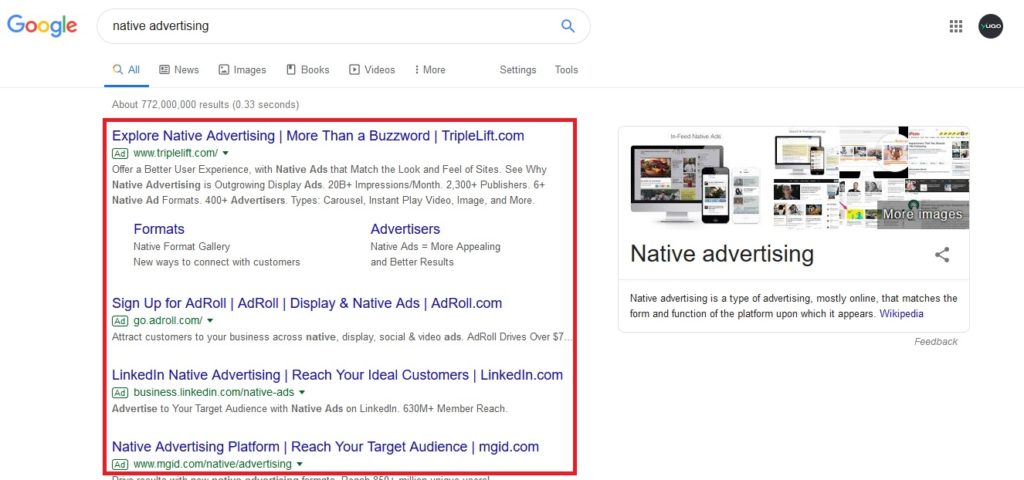
3: PROMOTED LISTINGS
Take a look at the results of this Etsy search:
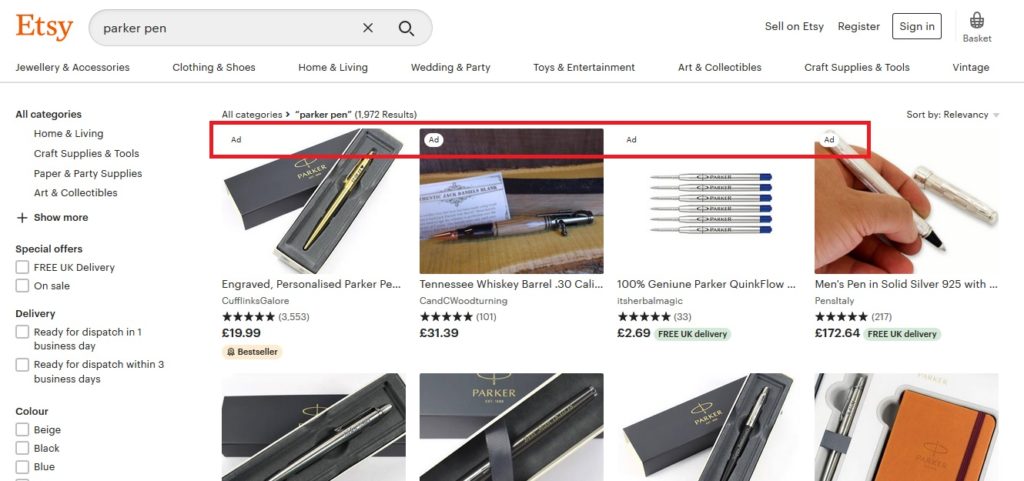
The first listings are promoted; however, you can tell so only by a small “Ad” icon in the upper-left corner. As promoted listings are generally made for sites that don’t have editorial content, they are designed to look nearly identical to other products or services that one can find on a certain site.
Such listings are usually narrowly targeted and created to generate a direct response from consumers.
4: RECOMMENDED CONTENT
This is an example of what recommended content native advertising looks like:
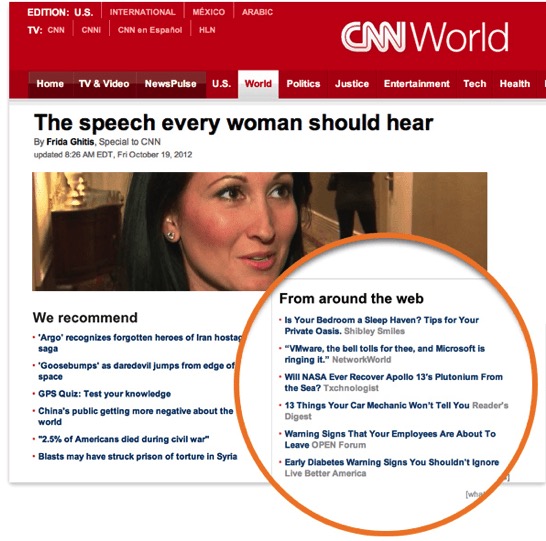
If you click on one of these links, it won’t open on the CNN website. Instead, it will redirect you to another site that is being promoted: Reader’s Digest, OPEN Forum, or another one from those listed in the example.
Visitors to the CNN website might click on such ads for the following reasons:
- They trust CNN and therefore trust CNN’s recommendations
- They think it’s another one of CNN’s articles
- They are intrigued by an ad’s headline
This type of native advertising is one of the most beneficial: advertisers pay for visits or clicks and, in exchange, get their ad shared on a variety of websites.
5: IAB STANDARD ADS
These are the ads displayed in standard IAB content, also known as in-ads.
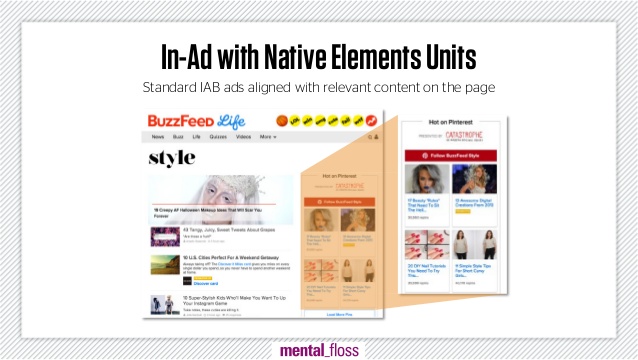
As you can see, they are placed outside the main content block. However, both their content and design is still relevant to the platform. The style tips from Pinterest could seem interesting to those who read Buzzfeed posts on style. Just like promoted listings, IAB standard ads are narrowly targeted as well.
BENEFITS OF NATIVE ADVERTISING
We’ve already figured out that native advertising looks more organic and less intrusive than traditional ads. However, it’s not their only perk.
Native advertising has the following benefits:
- It is more trustworthy: A 2017 Time Inc. study showed that 90% of consumers trust branded content more than traditional advertising.
- It is seen more often: Consumers look at native ads 53% more frequently than banner ads.
- It boosts sales: The previous study also showed that native ads registered 18% higher lift in purchase intent and 9% higher lift for brand affinity responses compared to banner ads.
- It has high CTR rates: According to a 2018 AppNexus report, CTRs for native display ads are 8.8x higher than the average display ad.
- It works well for mobile branding: In a 2013 eMarketer’s report, 97% of mobile marketers said that native mobile ads were very or somewhat effective.
The numbers speak for themselves; native advertising is indeed effective in catching the consumer’s attention and encouraging them to buy from you, click a link to your site, and so on. Therefore, you should consider using various methods of native advertising if you want to stay competitive in the e-commerce world.


